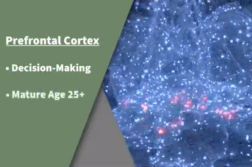LOS ANGELES, Calif. (Ivanhoe Newswire) — Every eight seconds a baby is born in the U.S. That means almost four million little boys or girls will be born in 2020. For most, the delivery will be textbook. But what if it isn’t? We met a little boy who came into this world with something quite unexpected and things turned out better than anyone ever thought possible.
Oliver’s dad vividly remembers his son’s birth.
“I remember the doctor saying to me, all right Dad, get your camera ready. Pretty shortly thereafter that’s when sort of the air was taken out of the room and I said have you ever seen something like this before? And, she said no,” Peter Heilbron described.
“It was so large that his, his arm was completely elevated up over his head and it was stuck in that position,” he told Ivanhoe.
The 12-ounce mass was a lymphatic malformation.
“When a lymphatic malformation develops those, instead of those lymphatic channels developing as tiny little tubes, they develop like little bubbles or balloons,” Dean Anselmo, MD, Co-Director of the Vascular Anomalies Center at Children’s Hospital Los Angeles, explained.
Dr. Anselmo’s facility is one of the few in the country that uses sclerotherapy for vascular malformations.
“I kind of describe it like if you put super glue inside a balloon and then try to fill it up with water. It can’t. It won’t fill up,” he said.
Using a needle, doctors injected a special medication into the cyst that causes the wall to collapse. It took three consecutive treatments to reduce Oliver’s malformation from this to this.
Left with a surgical scar that’s barely visible and full use of this right arm.
“So, there are days where I look at him and I see his tiny little remnant of a scar and I’m like, I can’t believe that, that is not how he was born,” Jennifer Heilbron said.
These types of malformations develop between four to six weeks of gestation, and often cannot be seen during a prenatal ultrasound. Twenty years ago, this story may have a different ending for Oliver. Surgeons would have immediately cut the cyst off often leading to a reoccurrence of the malformation or causing problems that could last a lifetime. Children’s Hospital Los Angeles is one of ten multi-disciplinary vascular anomaly centers in the United States. Luckily, the Heilbrons live less than an hour away.
Contributors to this news report include: Marsha Lewis, Producer; Rusty Reed, Videographer; Roque Correa, Editor.
To receive a free weekly e-mail on Medical Breakthroughs from Ivanhoe, sign up at: http://www.ivanhoe.com/ftk
MEDICAL BREAKTHROUGHS
RESEARCH SUMMARY
TOPIC: SAVING OLIVER: HELPING BABIES BORN WITH RARE DISORDERS
REPORT: MB #4694
BACKGROUND: Vascular malformations are a type of birthmark or growth often present at birth. Composed of blood vessels, they can cause functional or cosmetic problems. Blood vessel abnormalities can involve arteries, veins, capillaries, lymphatics, or a combination of these blood vessels. Many of these malformations are apparent at birth, others do not show up until later during childhood and teenage years. The most common ones that impact children in the first year of life are hemangiomas, the majority of which will improve throughout childhood.
https://www.chop.edu/conditions-diseases/vascular-malformations
LYMPHATIC MALFORMATIONS: Similar to veins, lymphatics carry water instead of blood and are part of the immune system. Lymphatic malformations affect only the lymph vessels and result in water-filled cysts that range in size from microscopic to macrocysts the size of small water balloons. Veins and lymphatics travel together and oftentimes blood can leak into the dilated lymphatics, which can result in blood blisters and blood crusts on the surface of the skin connecting to deeper lymphatics below. Some treatment options involve the carbon dioxide laser and a KTP laser, or a lifetime of compression stockings and pumps as surgical treatment tends to be suboptimal for lower extremities.
https://www.chop.edu/conditions-diseases/lymphatic-malformations
SCLEROTHERAPY FOR VASCULAR MALFORMATIONS: Previous to this therapy technique, a majority of kids suffering from vascular malformations would go straight into surgery regardless of where the malformation was located. These surgeries often resulted in recurrence of the malformation, causing damage to vital structures, scarring, and resulting in a likelihood of complications.
“Sclerotherapy is a procedure done by an interventional radiologist usually, and it’s under an anesthetic. The cyst is aspirated, a small needle is put inside of it, and the fluid is taken out. Then a medication is put inside of it. Sometimes that’s done with a small catheter but most of the time it’s with a needle. That medication creates an inflammatory reaction and it causes the walls of that malformation to become sticky and collapse into itself. When that happens, it can’t fill back up with the fluid. I kind of describe it like if you put super glue inside a balloon and then try to fill it up with water it can’t, it won’t fill up. So that’s what sclerotherapy does and it’s a relatively well-tolerated and safe procedure, although it creates inflammation in a large area, so it’s painful. And there are potential side effects and risks to that, but it’s a needle instead of a scalpel, right? So it’s much less invasive.”
(Source: Dean Anselmo, MD, FACS, FAAP)
FOR MORE INFORMATION ON THIS REPORT, PLEASE CONTACT:
Lauren Song
323-361-3614
lasong@chla.usc.edu
If this story or any other Ivanhoe story has impacted your life or prompted you or someone you know to seek or change treatments, please let us know by contacting Marjorie Bekaert Thomas at mthomas@ivanhoe.com



